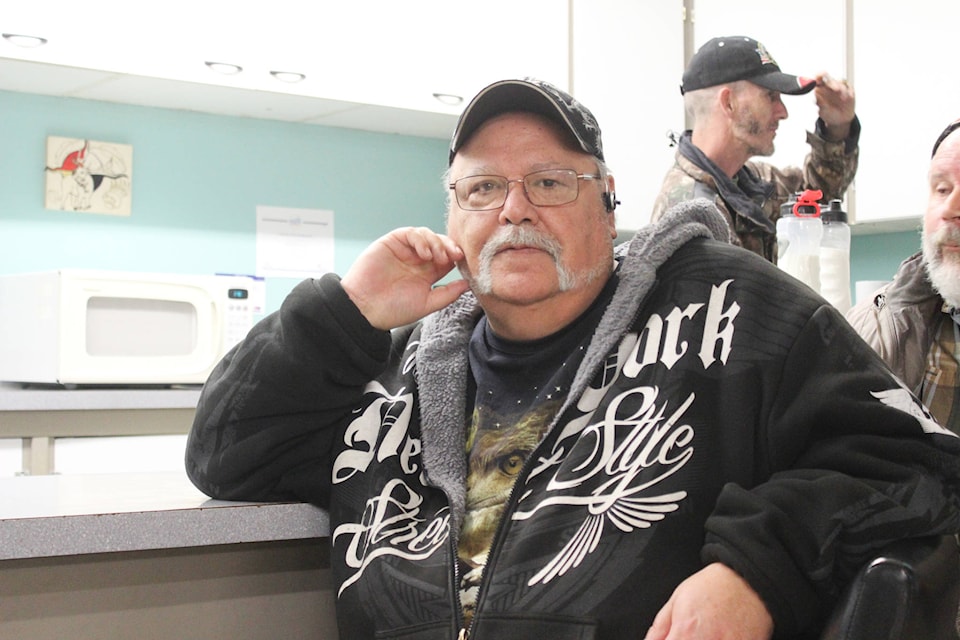Dampened by snow and chilly temperatures, the annual homelessness count in Williams Lake was trickier than usual.
The count, which took place on March 26, was one of 12 co-ordinated throughout the province to better paint a picture of homelessness in B.C.
Locals set out to survey homeless individuals throughout the community, using a set of questions to gather anonymous data about their demographics and needs.
The data, once collected, will be used to inform B.C.’s Homelessness Action Plan, as well as establish a benchmark to measure the progress made to combat poverty over time.
The Homelessness Action Plan is set to focus on permanent housing and services.
Homeless Outreach Worker Wayne Lucier with the Canadian Mental Health Association Cariboo Chilcotin Branch was one of a series of people conducting the count in Williams Lake on Monday.
He said the weather made a difference in who they were able to reach.
“It was just too cold and wet and miserable so people who are normally out and about stayed inside.”
Compared to who they might be able to contact on a warmer day, Lucier said Monday’s numbers were much less.
“We always have a large population of couch surfers, so anyone who is able to, they’re going to stay indoors.”
He said often people who couch surf don’t consider themselves a member of the homeless population, but they’re important to reach for the count.
“There are not a lot of people who are out wandering in the streets. There are very, very few people out there today, which is sad because a higher count might show better odds of getting stuff done in Williams Lake.”
Lucier said he is hoping the numbers will show that Williams Lake needs more affordable housing.
“Not more housing, generally, but more affordable housing.”
Lucier started at 7:30 a.m. (his usual start time) and visited the park, a few locations downtown, and even houses where he knows individuals couch surf.
Other counts, conducted by at least 10 other people, happened around town, in Boitanio Park, but also at lunches held at the Friendship Centre, St. Vincent de Paul and the Salvation Army.
While the weather was certainly not helpful, Lucier said that the homelessness counts are never quite representative.
“It’s up to who you find,” he said.
The numbers compiled in Williams Lake Monday, and from other areas in the province through March and April will be released early in the summer. In the fall, they will be compiled with data from counts from cities, by the federal government into a bigger report and the Homelessness Action Plan is expected to be released later in the year.
The provincial count is co-ordinated by the Homelessness Services Association of BC who is partnering with the BC Non-Profit Housing Association and Urban Matters to support communities and compile the results.
“Good solutions require good data. That’s where these counts come in,” said Selina Robinson, Minister of Municipal Affairs and Housing. “Through these counts, we can get better data on the extent of the challenge in each region, giving us the information we need to plan future housing solutions.”
Last year’s count surveyed 48 people in late February.
Of them, 14 were women, 33 were men and one was a child.
The results of the survey showed that many stayed in shelters, some slept outside, while others were counted in the hospital or jail cells without a home to return to.
At least 44 per cent identified themselves as Aboriginal.
Twelve people surveyed were seniors, nine were under the age of 24 and 10 reported that they had no source of income.
